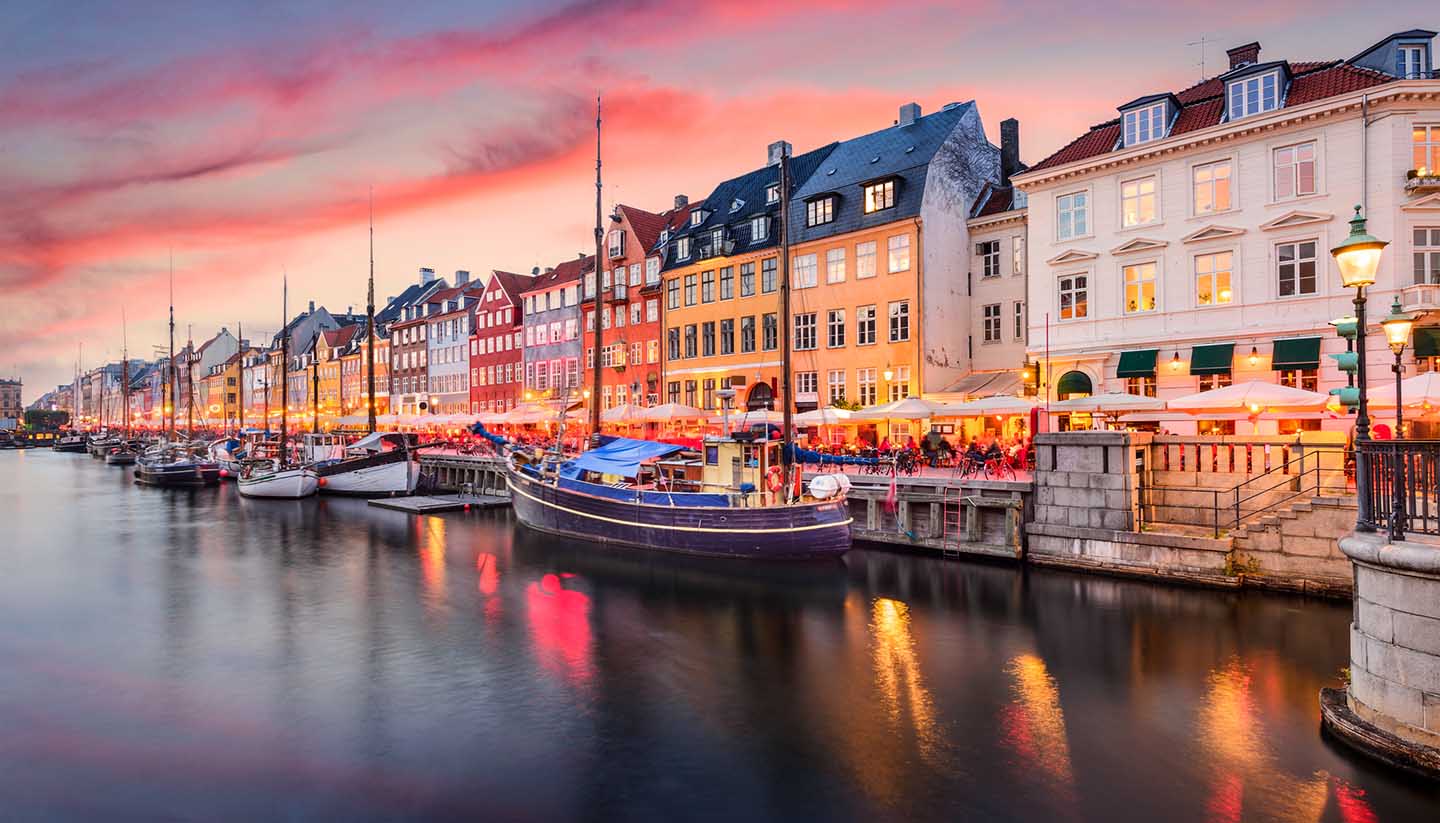Denmark Weather, climate and geography
Weather and climate
Best time to visit
Denmark has a temperate climate marked by relatively cool summers and moderately cold winters. In terms of precipitation, it has about 765mm (30 inches) a year.
Spring (March to May) starts of cold but warms up gradually. This is usually the driest season.
Summer (June to August) is the best season to visit as the weather is pleasant with long daylight – about 17 hours of daylight per day in June and July – thanks to its northerly latitude. In July, the average high in Copenhagen is 21°C (70°F) but temperatures are lower for cities in the north bordering the North Sea. Climate change is affecting every country including Denmark, so from time to time there are hot days which see temperatures climbing to 30°C (75°F) and beyond.
Autumn (September to November) is often windy and rainy; pack a raincoat if you plan to visit during these months.
Winter (December to February) is cold and the days are short (the sun sets between 3.30pm to 4.30pm in December). In January, the average high is 2°C (36°F) while the average low is -2°C (28°F) in Copenhagen, but in January 1987, the city saw the temperature drop to -18°C (-0.5°F).
Weather in the Faroe Islands: The Faroe Islands are under the influence of the warm current of the Gulf Stream, as such they enjoy a very mild climate despite its latitude. Winters are mild, but the islands are often cloudy, windy and cool throughout the year. Summers are cool, but with long hours of daylight.
Weather in Greenland: Greenland has an Arctic climate, with low humidity making temperatures feel warmer than expected. However, average temperatures in summer seldom exceed 10°C (50°F).
You can also follow the link and see the weather in Copenhagen and the best time to visit Copenhagen guide for more information.
Required clothing
As Denmark borders the North Sea and the Baltic Sea, it means the weather often changes, so pack a jacket and a raincoat if you're visiting in summer. Waterproof gear and extra layers are a must in autumn. Heavyweight for winter months and mediumweight is suitable for spring.
Geography
Located south of Norway and southwest of Sweden, Denmark is the smallest Scandinavian country. The country consists of the peninsula of Jutland (which is north of Germany) and over 400 islands of various sizes, some inhabited and linked to the mainland by ferry or bridge. The landscape consists mainly of low-lying, fertile countryside broken by beech woods, small lakes and fjords.
Greenland and the Faroe Islands are also under the sovereignty of the Kingdom of Denmark, although both have home rule. The Faroe Islands is a group of 18 major islands in the North Atlantic inhabited by a population of 51,540 (2019), whose history dates back to the Viking period. Greenland is located between the Arctic and Atlantic oceans and the largest non-continental island in the world. Three quarters of Greenland is covered by a permanent ice sheet and its population of 55,877 (estimate 2018) makes it the least densely populated territory in the world.



